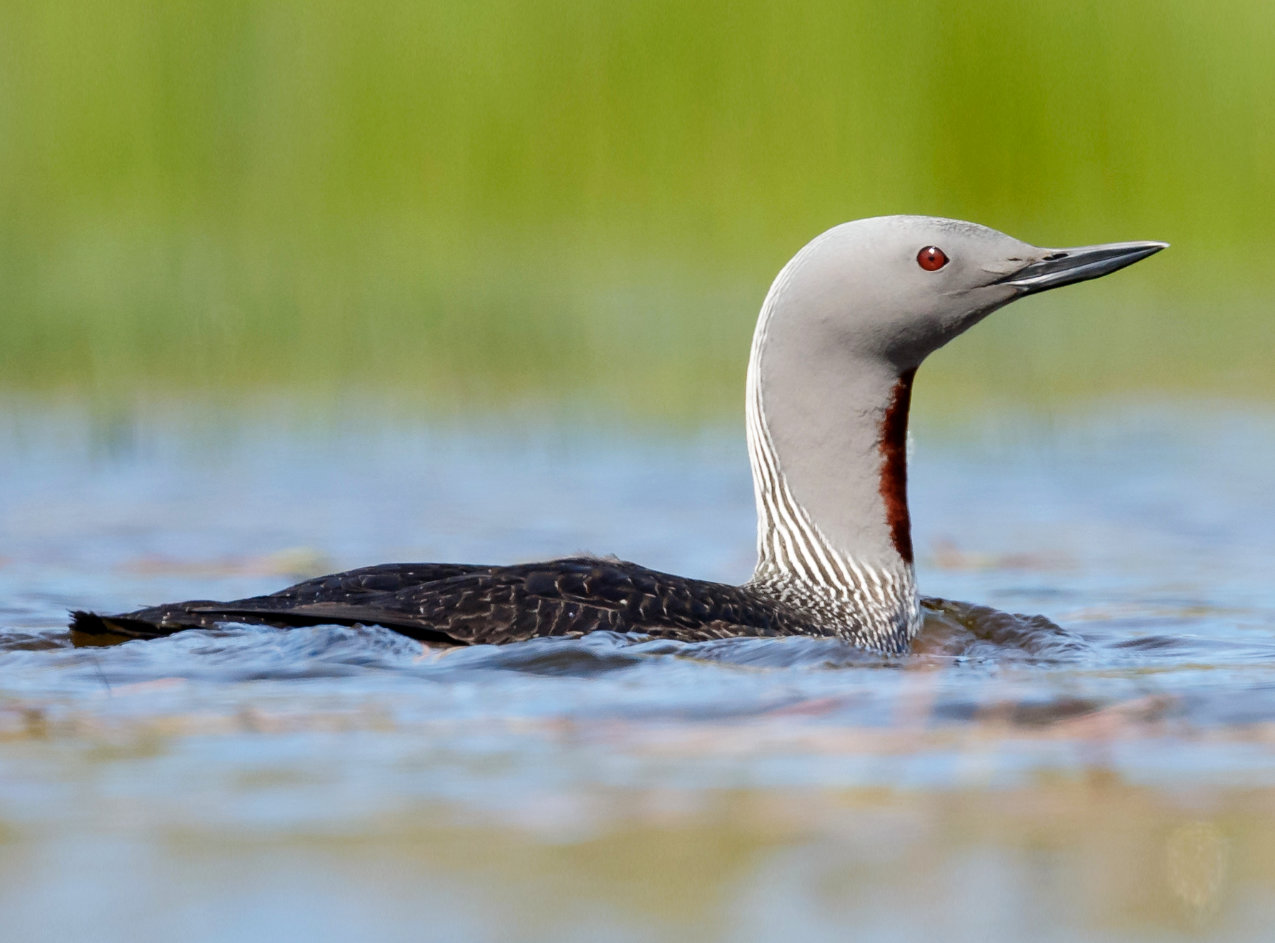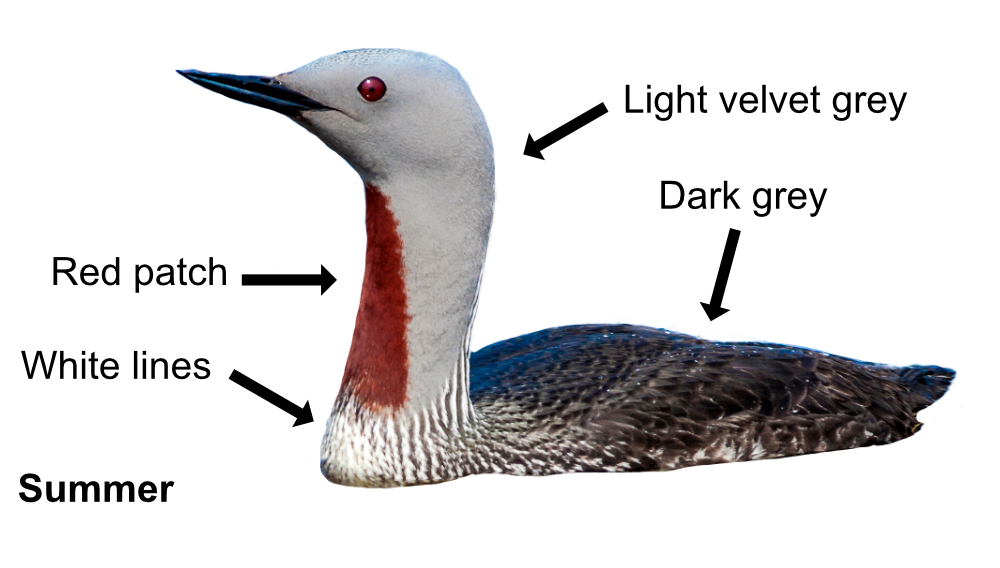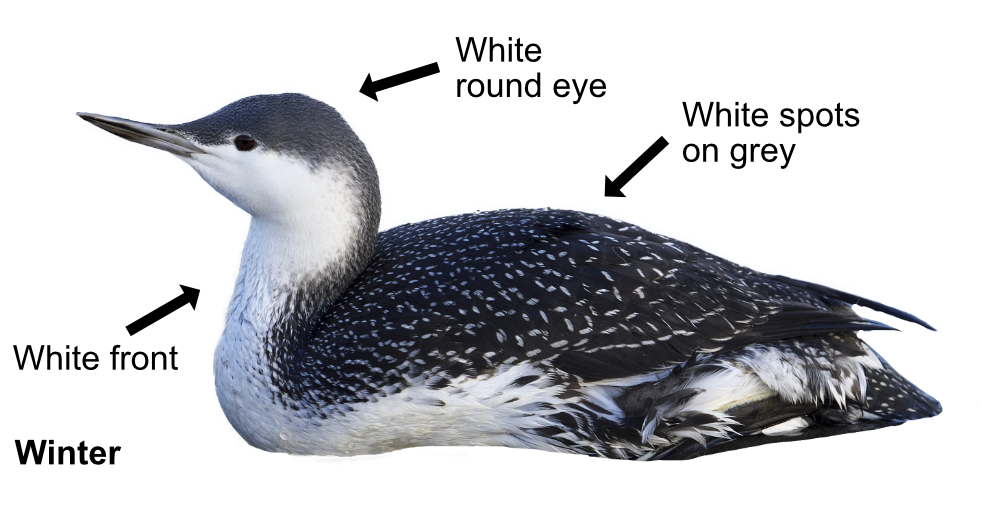
The Red-throated Diver is the smallest and slimmest Diver. Like the Great Northern Diver, it sits low in the water with an upright neck but holds its bill tilted upwards. It is the most common of the British Divers. It is usually seen singly though can form loose flocks, bobbing about around our coasts in winter or on Scottish lochs in the summer.
In winter, the Red-throated Diver is a nondescript bird, greyish above fading to white below with white spots on its back and pale around its eye. In summer, The Red-throated Diver lives up to its name with a distinctive red patch on its throat and has a velvet grey head and neck, a dark grey back, narrow white stripes on its neck and white underparts. In flight, it looks hunchbacked with its drooped thin neck and its wings being lifted high above its back. It makes short quacks in flight and harsh barks or weird wailing calls when on the breeding grounds.

Red-throated Divers hunt fish by diving with a jump and can stay underwater for over a minute. Like other Divers, it is well adapted to the water with dense bones that help it to stay submerged, legs set back to provide excellent propulsion, and a body that is long and streamlined. Their diet is mainly fish though they will eat amphibians, molluscs, crustaceans, invertebrates, and plant material.

The Red-throated Diver breeds on the freshwater lakes and lochs of northern Europe. Following a noisy air display, mum and dad settle down to build the nest from a heap of vegetation close to the water's edge. Both parents incubate the 2 spotted eggs which hatch after 27 days. The youngsters leave the nest the next day, and mum and dad feed them, often flying out to the sea to find food. The youngsters can fly 43 days later though don't become fully mature adults for 2-3 years. Unlike other Divers, the Red-throated Diver does its moult soon after breeding, in late summer or early autumn, shedding all its flight feathers at once and becoming flightless for 3-4 weeks.
About 1,300 Red-throated Divers breed in Britain. The number swells to 17,000 in winter with birds coming here from Scandinavia, Greenland and Iceland. In harsh winters, Red-throated Divers may go as far south as the Mediterranean to get warm. Their major threats are oil spills, pollution, and fishing nets. The oldest recorded Red-throated Diver lived to 23 years old.
Their Latin name is 'gavia stellata' where 'gavia' is the Latin for an unidentified seabird or 'sea mew' and 'stellata' means 'set with stars' or 'starry', referring to its speckled back in winter. The English name is straightforward as it has a red throat and dives, though a few local names include 'sprat borer' from the fish it likes to eat. The Americans call it a 'red-throated loon' from its calls, and the Scots call it a 'rain goose' because it was thought to predict the weather. Its short cries indicated fine weather and its long, plaintive cries meant it would rain and was time to get the bagpipes out.